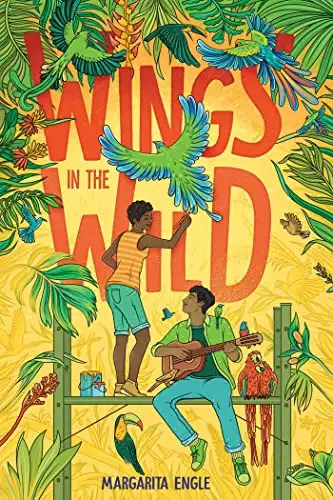Winged beings are meant to be free,
not caged.
At the heart of our dilapidated seaside home
in the central courtyard—hidden by walls—
we have a secret museum of living statues
carved from the growing limbs
of richly hued native trees.
Deep reddish-brown mahogany like my skin,
midnight-black ebony like my eyes, and radiant
golden majagua like my sunny name.
This last tree is a wild hibiscus
with yellow flowers that attract
tiny emerald zunzunes
and their minuscule cousins
los zunzuncitos, this island’s endemic
bee hummingbirds, the smallest pajaritos
on Earth, found nowhere else, just Cuba.
¡Ay, Cuba! How we suffer here, surrounded
by imprisoned beauty.
Art Crimes
The problem with our sculpture garden
is that the statues are illegal.
Mami and Papi are dissidents—protesters
who crave
artistic liberty.
Visiting birds come and go freely
by zooming high above the coral stone walls
but we
are in a cage
imposed by Ley 349,
a decree that bans any art
that protests the banning
of art.
Carved Wingbeats
The tocororo is Cuba’s national bird.
Blue, white, and red, like our flag.
He perches and flicks his tail
back and forth
in a dance
of love.
Everyone knows that los tocororos
cannot survive in captivity.
That is why, each time I pose
as the inspiration for his sculpted form
I feel like a symbol
of liberty.
Winged, rooted, and chained,
my tocororo-self tries to fly
but always fails.
Only freedom of expression for artists
will transform these statues.
Only then will my parents cut the carved chains
that keep my winged image from soaring.

